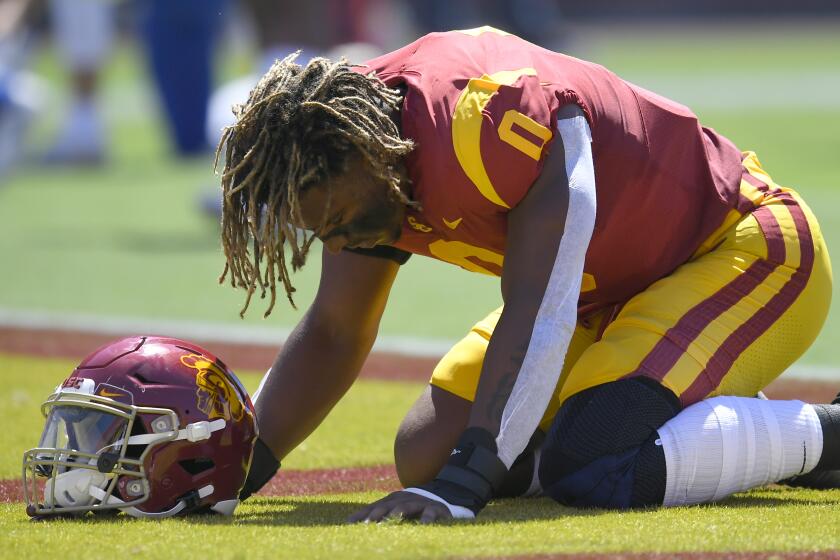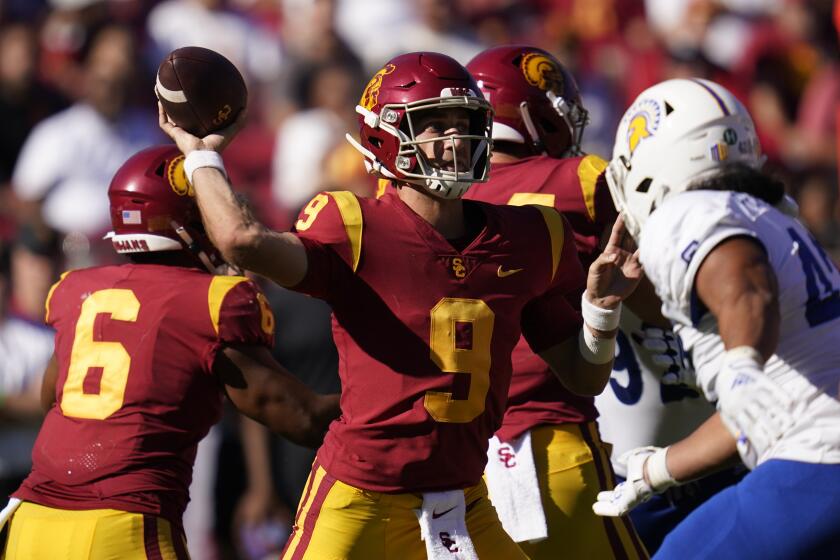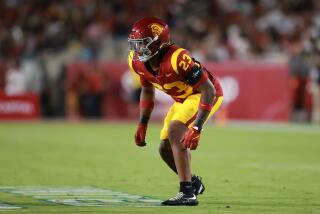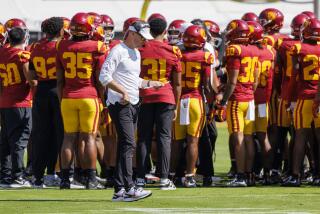USC poised to make double tight end sets a hallmark of its offense
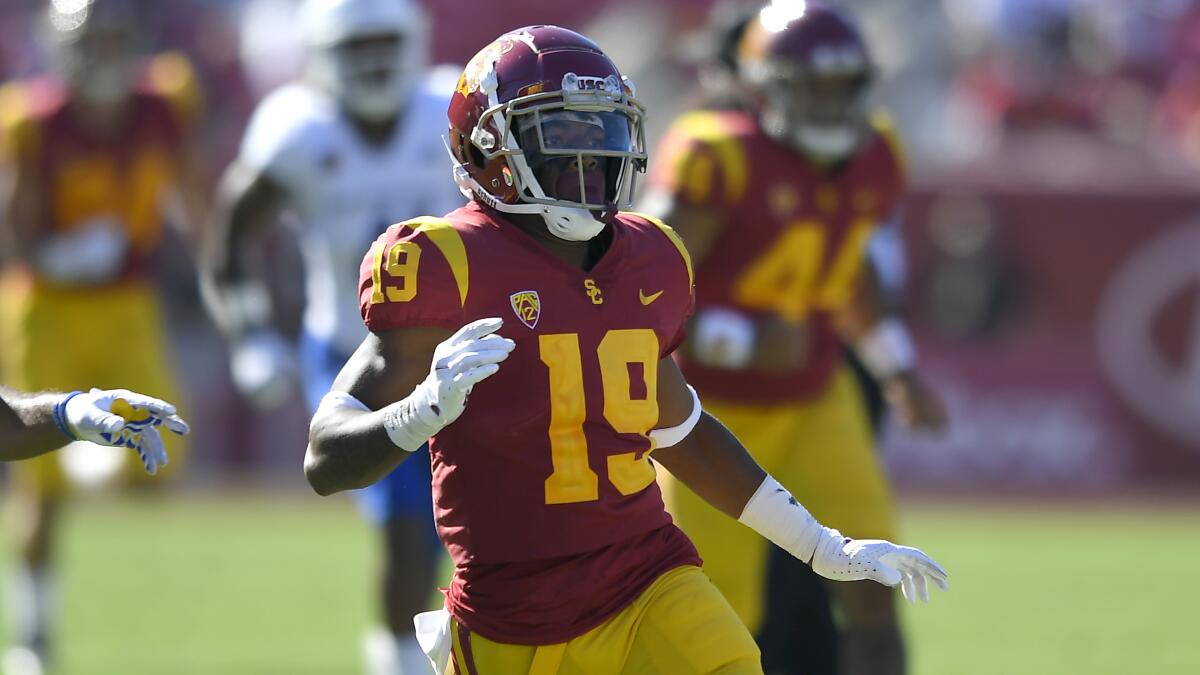
When Kelvin Smith first got wind of his new offensive coordinator at North Texas, he was worried. All Smith knew of Graham Harrell ahead of that 2016 season was that Harrell taught the Air Raid offense. And as he understood it then, the Air Raid, with its four-wide sets and sling-it-around mentality, was no place for a tight end like himself.
His apprehension felt warranted that spring, when Harrell stuck the redshirt freshman in the slot as an oversized — and largely ignored — receiver. Smith caught just seven passes that season as the only active tight end on the roster, but with each passing year, his role evolved along with Harrell’s version of the Air Raid.
It wasn’t until Harrell’s third year — the same point at which USC now finds itself with the hotshot young coordinator — that North Texas really took off. Smith, now a graduate assistant for the Mean Green, says it was the season Harrell finally opened up to 12 personnel and unlocked the tight end.
No. 14 USC is set to kick off Pac-12 play against Stanford on Saturday at the Coliseum, with the Trojans pushing to build on their late surge against San Jose State.
A similar renaissance could now be in the works at USC. After two seasons of spreading out three-, four-, and even five-wide at receiver, the Trojans offense came out in two-tight end sets 72% of the time during its season-opening win over San Jose State, far more than ever before under Harrell.
USC settled largely into 12 personnel last Saturday — with two tight ends and one back — but those looks were rarely the same in practice. Sometimes the tight ends came out in condensed sets, bunched up near the offensive line. Other times, they spread out like receivers. The result was more deceptive playcalls, a more efficient run game (5.1 yards per carry) and more vanilla looks from the defense in response.
“It makes it hard on defenses when you look up and you have guys that can be either big targets at wide receiver positions or being attached [as a blocker],” USC coach Clay Helton said. “Do you look at it as, ‘Wow, is this a passing personnel group or is this a running personnel group?’ To be honest with you, it really creates a great sense of balance.”
It worked well enough in USC’s 30-7 win that Helton said this week the Trojans’ 12 personnel package — with two tight ends and one back — would remain a staple the rest of the season. But how big of a part it may actually play in Harrell’s evolving offense remains to be seen.
Sets using two tight ends certainly aren’t going to catch Stanford (0-1) by surprise Saturday, when USC opens its Pac-12 slate under the lights at the Coliseum. No team in the conference has more regularly deployed the tight end over the past decade than Stanford, whose two-tight end look was a hallmark of coach David Shaw. It’s only recently been adopted by more and more spread offenses, as teams search for new ways to use size and athleticism in exploiting mismatches.
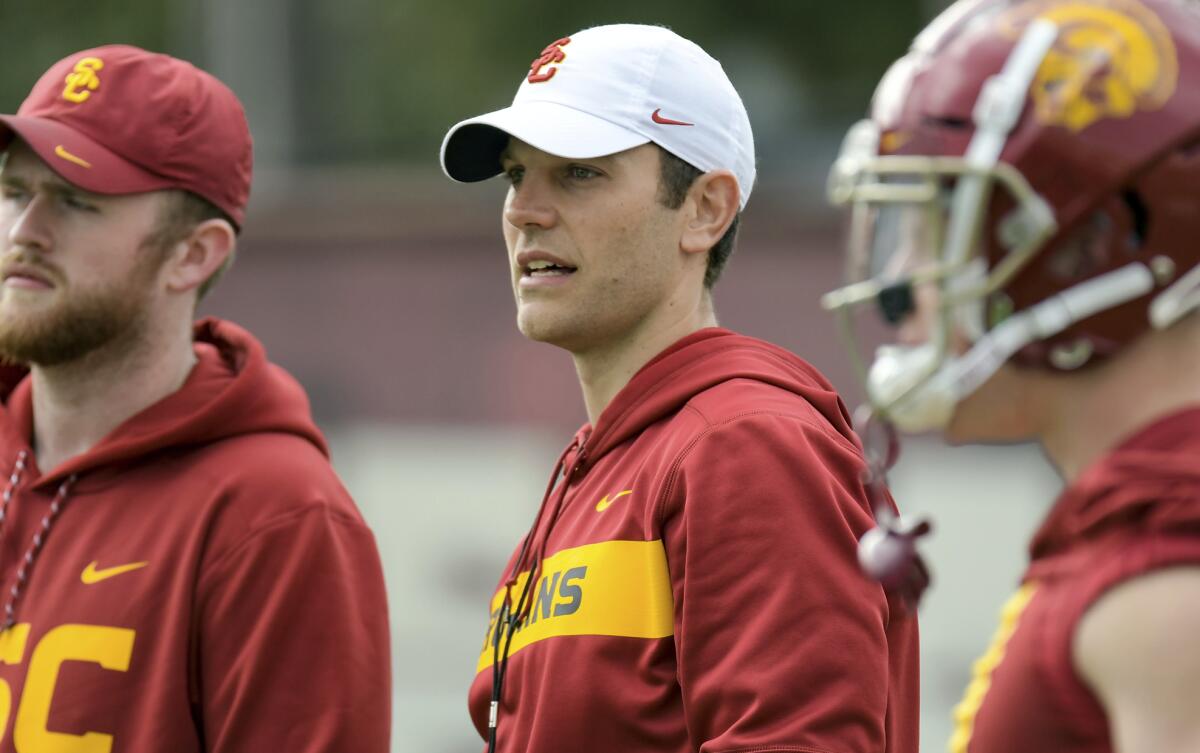
“They were kinda the first within our league to be able to say, ‘Hey, a tight end is just not a tight end, he can spread out,’” Helton said of Stanford, which is coming off an opening-week beatdown by Kansas State.
After largely ignoring its tight ends the last two seasons, USC now has the personnel to put that notion into practice, with Texas transfer Malcolm Epps in the fold, Jude Wolfe healthy again and uber-talented freshman Michael Trigg already champing at the bit for a breakout game. Last Saturday, three different tight ends caught passes, already one more than all of the 2020 season.
But if that 2018 campaign is any indication, USC may opt to dial back its heavy sets somewhat against Stanford. Whenever North Texas played bigger, more physical opponents that season, Smith said Harrell usually used more three- and four-receiver sets to get more speed on the field.
That could mean a larger role this week for USC’s supporting cast of receivers, including speedy sophomore Gary Bryant Jr., who is expected to make his season debut.
At North Texas, that balance paid off big time in 2018. For Smith, it was clear early on the offense had evolved. He recalls Mean Green defensive coordinator Mike Ekeler stopping practice to point out that Smith and another tight end were “making my life a living hell.”
Miscues from the young USC offensive line Saturday against San Jose State showed some growing pains Trojans might endure this season.
“That third year, we really evolved into the best offense I was a part of,” Smith said. “When we got on the field, it made it hard for defenses. One play, we were condensed. The next play, we were all spread out. It made it hard for defenses to locate us or get their own personnel right.”
North Texas offense passed for nearly 4,000 yards and rushed for nearly 2,000 more that season, catching the attention of Helton. He hired Harrell that January.
Their marriage hasn’t always been smooth since. But now, at the start of Harrell’s third season with the Trojans, USC must hope a healthy dose of 12 personnel is enough to help get its offense going.
More to Read
Go beyond the scoreboard
Get the latest on L.A.'s teams in the daily Sports Report newsletter.
You may occasionally receive promotional content from the Los Angeles Times.

